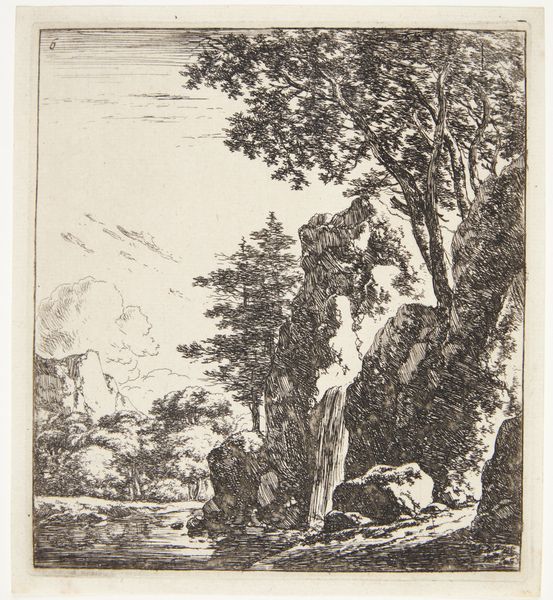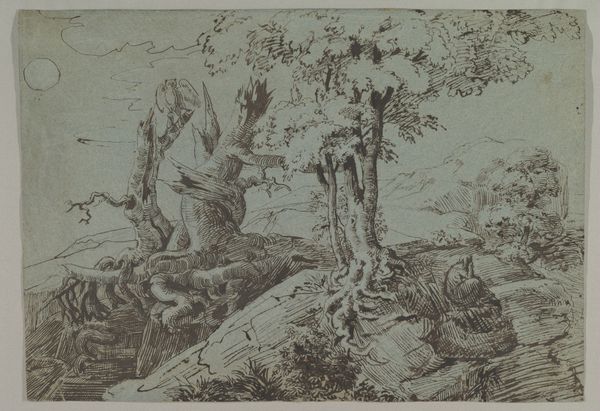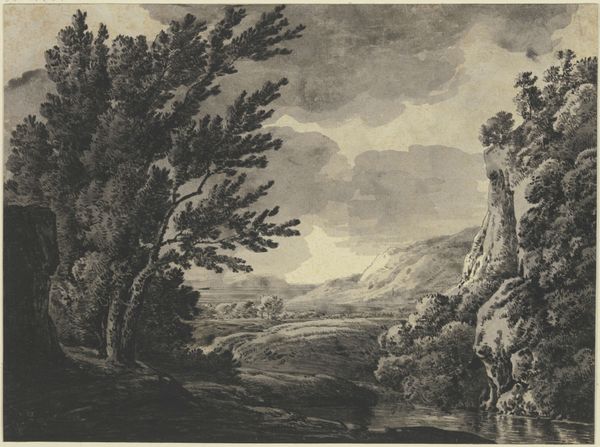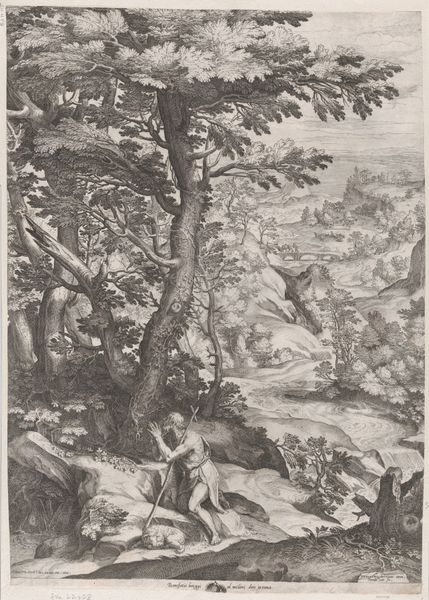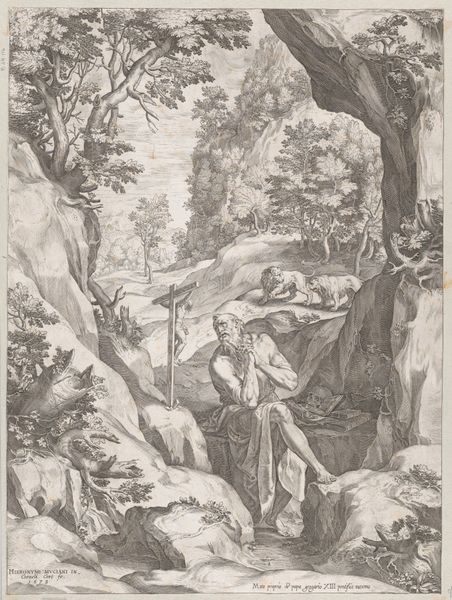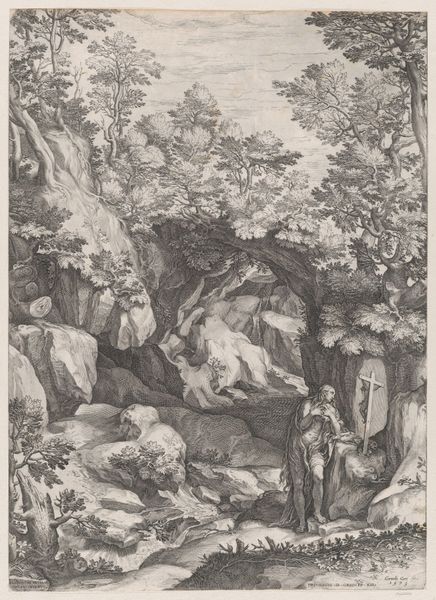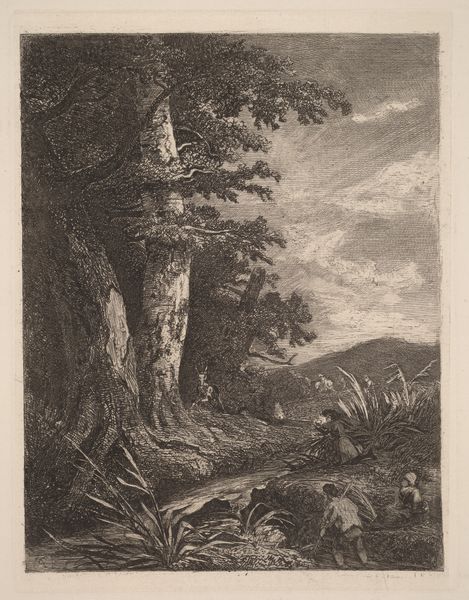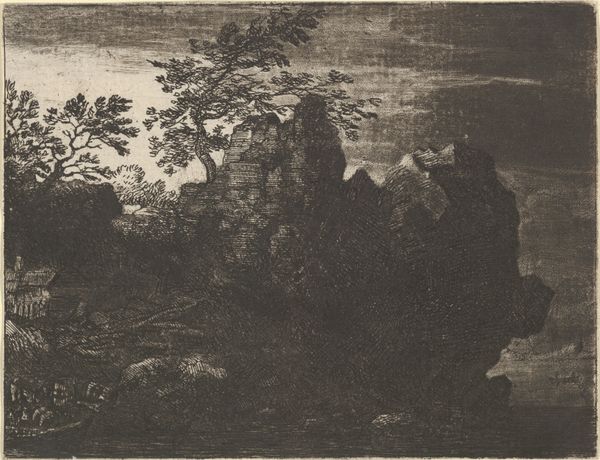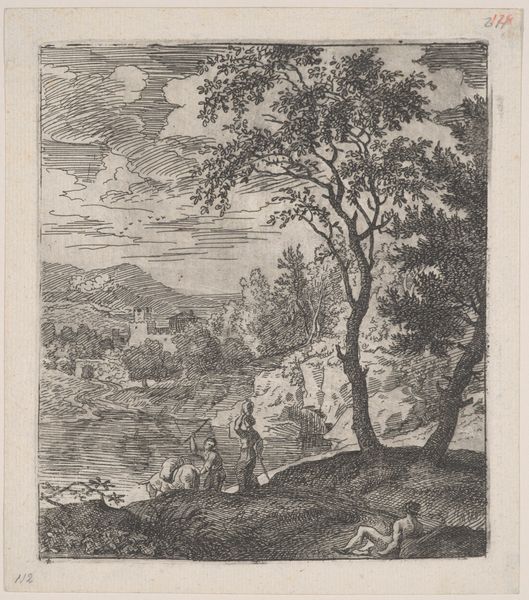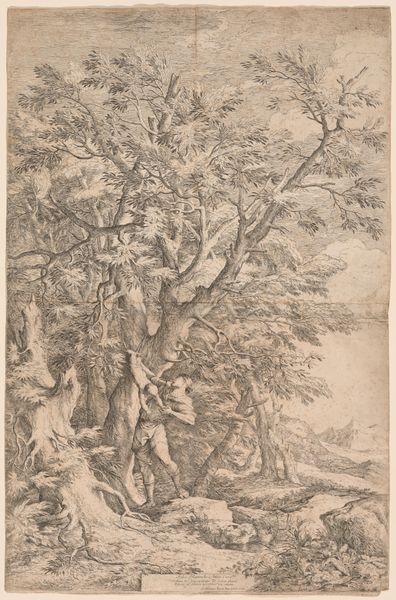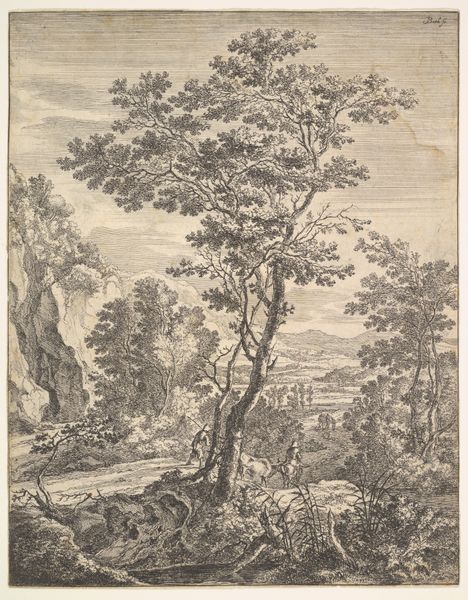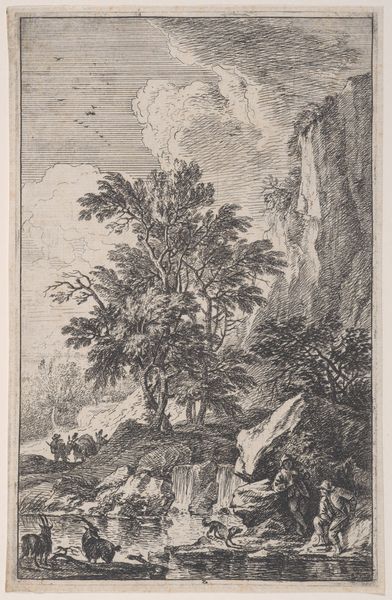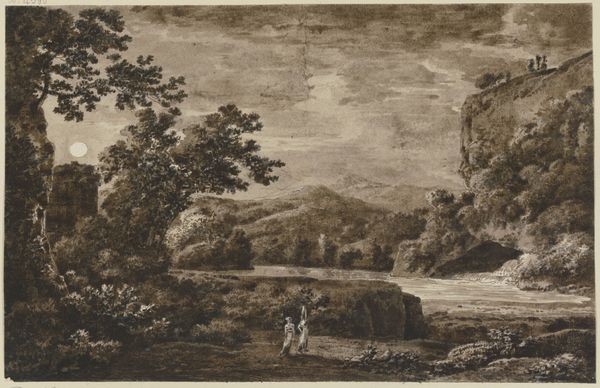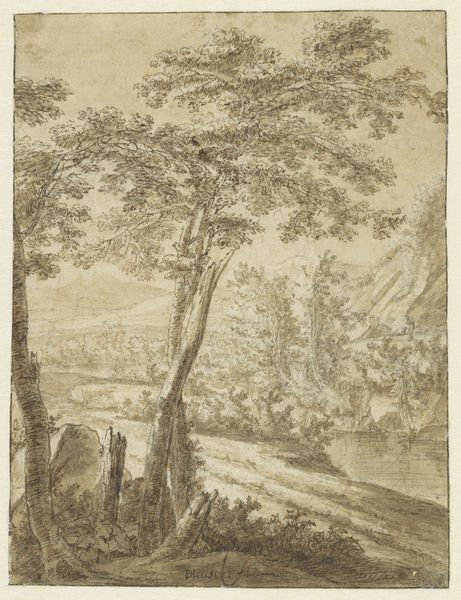
painting, oil-paint, canvas
#
dutch-golden-age
#
painting
#
oil-paint
#
landscape
#
canvas
#
genre-painting
#
watercolor
#
realism
Dimensions: 113.5 cm (height) x 95.5 cm (width) (Netto)
Editor: Here we have Jacob van Ruisdael’s "Landscape with a Hunting Scene," likely painted between 1643 and 1682, rendered in oil on canvas. It feels very somber to me. What do you see in this piece, looking at it through a broader lens? Curator: I see a depiction that seems idyllic, but the hunters in the scene signal the violence inherent in ownership and dominion over the natural world. Consider the context: The Dutch Golden Age was a period of immense wealth derived, in part, from colonial exploitation. Does this pursuit of game resonate differently when understood as a reflection of broader societal structures and power dynamics? Editor: That’s a perspective I hadn't considered. The figures seemed incidental to the landscape itself. Curator: Precisely! The small figures, almost engulfed by the landscape, reinforce the idea of man’s perceived dominance over nature while simultaneously highlighting their insignificance within it. This echoes colonial narratives of the time, the claim of rights to territories that become hunting grounds. What does the land, then, symbolize? Editor: Maybe it symbolizes the vastness of the world, and the figures are staking their claim upon it? But doesn't this reading place the artist complicit in promoting a colonial agenda? Curator: The art isn’t necessarily complicit, but reflective. These works invite us to scrutinize not just the surface beauty, but the historical currents that shaped their creation and continue to inform our reading. Art enables dialogue about power. Editor: So, looking at the painting as more than just a landscape allows us to have conversations about complex ethical issues. I hadn't considered all that! Curator: Exactly. Art isn’t just aesthetic; it’s a document of the social and political forces that shaped its creation and reception. This allows for multifaceted discussions, not just on compositional elements, but on questions of morality and historical power.
Comments
No comments
Be the first to comment and join the conversation on the ultimate creative platform.
